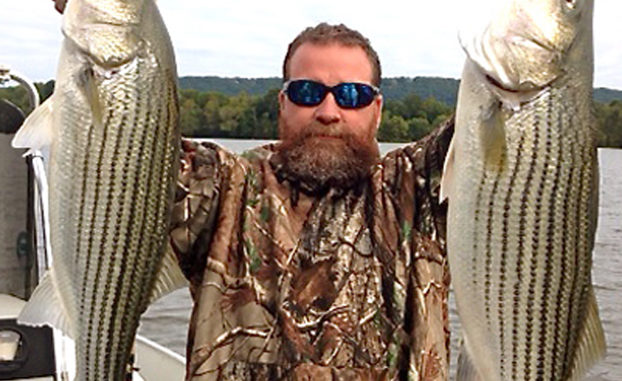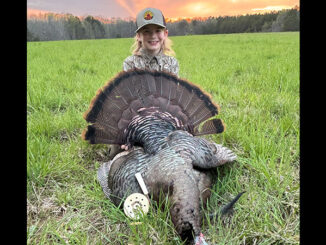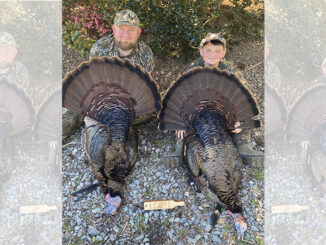
Persistence and location are important factors
Guides Jerry Hill and Maynard Edwards agree that September is a tough month for stripers everywhere, with fish transitioning from summer to early fall patterns, but with a little persistence, some quality fish can be caught from High Rock Lake.
“Most of the stripers taken this month come from upriver where the water is cooler, and the current stirs up forage and turns on the bite when (the power company) pulls the lake,” said Edwards (336-249-6782).
The downside to fishing upriver for stripers is getting there.
“Unless the lake is full, the run upriver is treacherous for big striper boats that can’t trim and run high in the water like a bass boat,” Edwards said. “The river channel keeps shifting each year, with silt being moved about here and there. Access areas upriver are either private or too small for big boats.”
For fishermen weary of damaging their lower units, Edwards said the main lake offers safer striper fishing. The best times to fish are in the morning and evening based upon recent trends in the pulling of water.
“The morning bite runs from 6 to 10 a.m., then stops dead,” he said. “The lake gets pulled slightly by 1:30 p.m. and gets pulled more by 4 or 5 p.m., which enhances the striper bite. I’d fish from 4 p.m. until nearly dark.”
Edwards said humps, high spots or extended points in 8 to 20 feet of water from Crane Creek upriver are potential striper hangouts. Hill (336-247-1265) likes the high spots and points near the mouths of Flat Swamp and Panther creeks.
Edwards and Hill agree that marking shad and stripers on your electronics isn’t good enough; instead, the configuration of the shad in conjunction with stripers is the key.
“When forage resembles clouds on your depth finder, you’re not likely to catch many fish,” said Hill. “The forage has to be broken up, which indicates feeding stripers.”
Hill and Edwards describe the broken forage as resembling strings of spaghetti. When that occurs, they pull baits through the area at depths slightly below the forage.
“Stripers linger below baitfish and rise to feed,” Hill said.
Edwards uses eight rods, including four down rods rigged Carolina-style, two planer boards with free lines and two rods with float rigs, all holding 6-inch shad.
Hill employs two downriggers with double rigs and three rods with lead-core line, all holding 1/4- to 3/4-ounce bucktail jigs with green or white plastic trailers.
“While High Rock doesn’t have as many stripers as Badin, when you catch one at the Rock, it usually weighs 6 pounds or more,” said Edwards.



